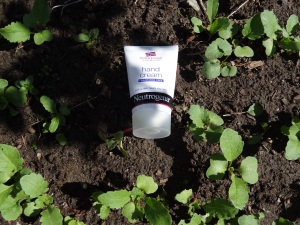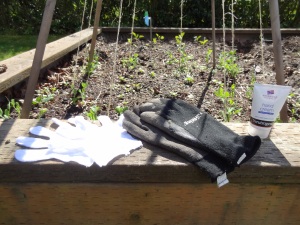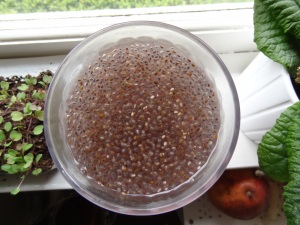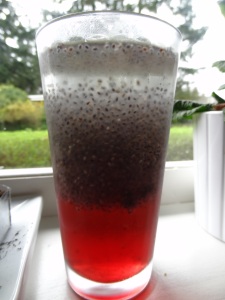
Spring and fall are hard for chronic eczema sufferers. And so is winter. And summer…now that I think about it. The point is, each season has its challenges – dry, cold air in the winter, pollen in spring, sweaty skin in summer, and mildew in the fall. All of these can exacerbate allergy-induced eczema, but for those of us who also love to garden, spring is an especially difficult time.
Early prevention
Getting a jump on your allergies is a good idea by taking an allergy medicine (prescribed or recommended by your doctor) as soon as the season begins and you start to feel the slightest itch. I didn’t have many troubles between Christmas and March so I stopped taking my daily Zyrtec but I started taking it again as soon as the urge to dig in the soil began.
Also, stay vigilant about keeping your hands moisturized with an unscented moisturizing cream or ointment as often as possible ahead of time. Not only will this keep your hands from cracking, but the extra barrier between your skin and allergens and moisture in the soil is just one more layer of defense.

Equipment
– I have a handled tool basket that I use to keep all of my equipment in one place; hand trowels, seeds, scissors, twine, sharpie, seed markers, pruners, a hat, and most importantly, clean gloves and a tube of Vaseline. These items never leave the tool basket!
– Cotton liner gloves are a complete pain in the neck, but not as much of a nuisance as cracked and bleeding fingertips. I always wear a clean pair of cotton liners underneath my gardening gloves. I bought these on Amazon and they do the trick: they are cheap enough that I don’t get upset when I lose a pair, and thin enough to wear underneath another pair of gloves.
– A good pair of waterproof but breathable gardening gloves will save your hands’ life. I recommend a pair that is made of a breathable fabric with rubberized palms. Most gardening gloves sold in stores fit this description, but avoid using all leather gloves because they could cause your hands to sweat. Keep an extra pair of gloves handy in case the ones you are using become sweaty or wet. Once they are wet inside, take them off immediately.
– I use Vaseline as my barrier because it has only one ingredient, it repels water and moisturizes. Some people swear by Aquaphor. This summer I am also going to try using Norwegian Formula Hand Cream by Neutrogena and my Theraseal, especially on days when I will be dealing with mud.
Remember…
– Wet gloves are your enemy!
– Never touch the soil with your bare hands, or any other affected part of your body.
– If the weather is hot and your find yourself sweating in eczema-prone areas (hands, elbow-pits, knee-pits, feet, etc) take a break to cool down and dry off.
– Stay very well hydrated. Moisturize from within by drinking water and other decaffeinated beverages throughout the day. I usually have one slimy glass of chia-seeds every day to keep the hydration going (recipe below).
– A little bit of sun on your eczema-prone areas is not the end of the world (as long as you don’t have photosensitive eczema). In fact, for severe sufferers many dermatologists will recommend light therapy to help the heeling process. I live in an overcast part of the world, fairly far north, where the sun’s rays are not overly strong except for a few months in the summer (so I am a little lax on my sunscreen routine), but a little sun is ok, just make sure that you don’t get too much and leave the sun immediately if any affected areas begin to perspire or show signs of sunburn or irritation!
If you transgress…
Like I did just an hour ago when I neurotically started pulling weeds with my bare hands while I was out playing with Small Boy, rinse the dirt from your hands in water and then immediately apply a moisture cream of your choice. It is especially important to keep your hands out of the soil when you have cracked skin to prevent infection.
Hydrating Chia Slime
Trying to be healthy and sugar free? I wouldn’t, if I were you. The only thing that helps me choke down this chia slime is the syrup.

Ingredients
1 tablespoon raw chia seeds
12 ounces of filtered water
2 tablespoons simple syrup of your choice (pictured is lingonberry syrup, but you could also use ginger-cinnamon simple syrup )
A strong constitution

Method
In a tall glass, pour water over the chia seeds and stir gently with a spoon. Place the glass in the refrigerator and chill for about an hour, stirring occasionally to keep the seeds from clumping. Mix in simple syrup and “enjoy”.
